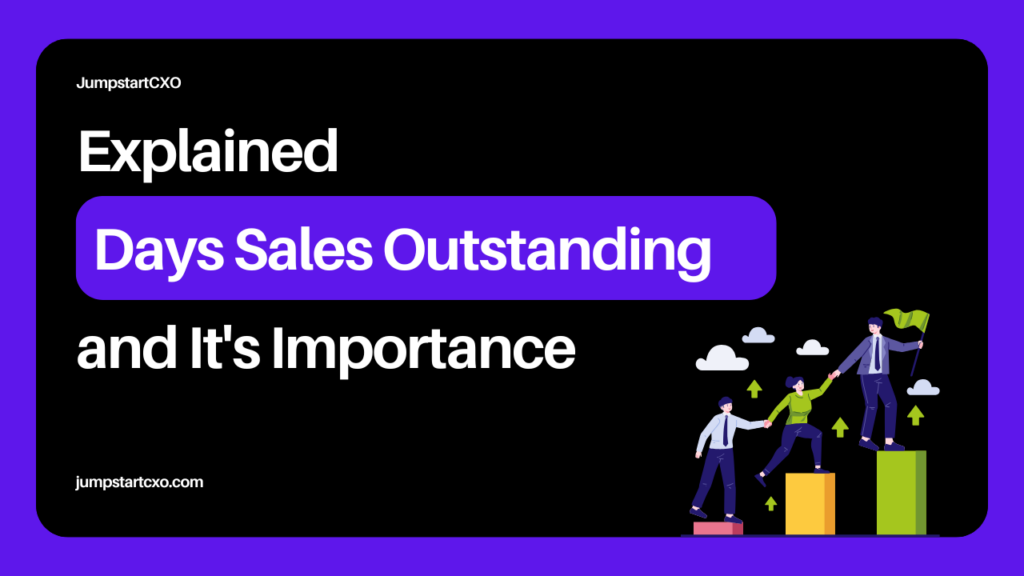In the world of business finance, understanding the distinction between cash flow vs profit is crucial for making informed decisions and ensuring the long-term success of your enterprise.
While both metrics are essential for assessing your company’s financial health, they represent different aspects of your financial performance.
This comprehensive guide delves into the nuances of cash flow vs profit, helping you grasp their significance and how they influence your business strategy.
Introduction to Cash Flow vs Profit
At first glance, cash flow vs profit might seem like interchangeable terms, but they measure different facets of your business’s financial status.
Cash flow refers to the actual cash moving in and out of your business, whereas profit is an accounting measure that reflects your business’s earnings after expenses.

Understanding the difference between the two can help you manage your finances more effectively and make strategic decisions that drive growth and sustainability.
Understanding Cash Flow
Cash flow is the lifeblood of any business, representing the actual cash that flows into and out of your company over a specific period.
It is a dynamic indicator of your business’s liquidity and ability to meet its financial obligations.
Types of Cash Flow
Cash flow can be categorized into three main types, each reflecting different aspects of your business operations:
- Operating Cash Flow: This represents the cash generated from your core business activities, such as sales of goods or services. Positive operating cash flow indicates that your business is generating enough cash from its operations to cover its expenses.
- Investing Cash Flow: This reflects the cash used for investing in long-term assets, such as property, equipment, or other investments. It can also include proceeds from the sale of these assets.
- Financing Cash Flow: This involves the cash flow related to financing activities, such as borrowing money, repaying loans, or issuing and repurchasing stock. It provides insights into how your business is managing its debt and equity.
Importance of Cash Flow
Maintaining a healthy cash flow is vital for the following reasons:
- Meeting Financial Obligations: Adequate cash flow ensures that you can pay your suppliers, employees, and other expenses on time, maintaining smooth operations.
- Investing in Growth: Positive cash flow allows you to invest in growth opportunities, such as expanding your product line, entering new markets, or upgrading equipment.
- Managing Uncertainty: Good cash flow management helps you navigate economic downturns or unexpected expenses, providing a financial cushion during challenging times.
For tips on improving cash flow, check out 10 Ways to Improve Collections and Cash Flow for actionable insights.

Understanding Profit
Profit is a measure of your business’s financial performance, calculated as the difference between your revenue and expenses over a specific period.
It reflects your business’s ability to generate earnings and is a key indicator of profitability.
Types of Profit
Profit can be categorized into different levels, each providing a unique perspective on your business’s financial health:
- Gross Profit: This is the profit calculated after subtracting the cost of goods sold from revenue. It reflects the profitability of your core business activities before considering other expenses.
- Operating Profit: This is the profit after deducting operating expenses, such as salaries, rent, and utilities, from gross profit. It provides a clearer picture of your business’s profitability from its core operations.
- Net Profit: This is the profit after deducting all expenses, including taxes and interest, from revenue. It represents the bottom line of your business’s financial performance.
Importance of Profit
Achieving and maintaining profitability is essential for the following reasons:
- Sustainability: Consistent profits indicate that your business is generating more revenue than it spends, ensuring long-term sustainability.
- Attracting Investors: Profitable businesses are more attractive to investors and lenders, making it easier to secure funding for growth and expansion.
- Reinvestment: Profits can be reinvested in the business to fuel growth, innovation, and competitive advantage.
Cash Flow vs Profit: Key Differences
While both cash flow and profit are critical for assessing your business’s financial health, they differ in several ways:
Timing of Cash Receipts and Payments
- Cash Flow: Reflects the actual cash received and paid out during a specific period. It considers the timing of cash inflows and outflows.
- Profit: Measures earnings based on accrual accounting, which records revenue and expenses when they are incurred, not necessarily when cash is received or paid.
Impact of Non-Cash Expenses
- Cash Flow: Excludes non-cash expenses, such as depreciation and amortization, which do not involve actual cash transactions.
- Profit: Includes non-cash expenses, which can affect the net income reported on your financial statements.
Short-Term vs Long-Term Focus
- Cash Flow: Provides a short-term view of your business’s liquidity and ability to meet immediate financial obligations.
- Profit: Offers a long-term perspective on your business’s financial performance and sustainability.
Why Cash Flow Can Differ from Profit
There are several reasons why your business might experience a disparity between cash flow and profit:
Timing Differences
- Accounts Receivable and Payable: If your customers pay you after you have delivered the goods or services, your cash flow might lag behind your profit. Similarly, if you pay your suppliers before receiving payment from your customers, your cash flow might be temporarily negative.
- Inventory Management: Building up inventory can result in a cash outflow, even though the expense is not recognized until the inventory is sold.
Capital Expenditures
- Investment in Assets: Purchasing long-term assets, such as equipment or property, requires a significant cash outflow. However, these expenses are typically capitalized and depreciated over time, affecting profit gradually.
Financing Activities
- Loans and Repayments: Taking out a loan increases your cash inflow, but the corresponding interest and principal payments reduce your cash outflow over time. These activities affect your cash flow more immediately than your profit.
Managing Cash Flow vs Profit
Effectively managing cash flow and profit requires a balanced approach that considers both short-term liquidity and long-term profitability.
Strategies for Improving Cash Flow
- Accelerate Cash Inflows: Encourage customers to pay early by offering discounts or implementing strict payment terms.
- Delay Cash Outflows: Negotiate extended payment terms with suppliers or delay non-essential expenses.
- Maintain a Cash Reserve: Keep a cash buffer to cover unexpected expenses or fluctuations in cash flow.
Strategies for Enhancing Profitability
- Increase Revenue: Focus on sales growth, expanding your customer base, or increasing prices.
- Reduce Expenses: Identify and eliminate unnecessary costs, negotiate better terms with suppliers, or improve operational efficiency.
- Optimize Pricing: Implement a pricing strategy that maximizes profit margins while remaining competitive.

Analyzing Cash Flow and Profit
Regularly analyzing your cash flow and profit can provide valuable insights into your business’s financial health and help you make informed decisions.
Cash Flow Statement Analysis
- Trend Analysis: Monitor trends in your cash flow over time to identify patterns and potential issues.
- Ratio Analysis: Use cash flow ratios, such as the current ratio or quick ratio, to assess your business’s liquidity and financial stability.
- Variance Analysis: Compare your actual cash flow against budgeted or forecasted amounts to identify discrepancies and take corrective action.
Profit and Loss Statement Analysis
- Margin Analysis: Calculate your profit margins to understand your business’s profitability at different levels, such as gross, operating, and net margins.
- Expense Analysis: Review your expenses to identify areas for cost reduction and efficiency improvements.
- Revenue Growth Analysis: Analyze your revenue growth trends to assess your business’s market performance and potential.
Case Studies: Cash Flow vs Profit in Action
Let’s explore some real-world examples to illustrate the differences between cash flow vs profit and their impact on business decisions.
Case Study 1: Retail Business
Consider a retail business that experiences high sales during the holiday season.
While the business may report significant profits during this period, its cash flow might be constrained due to delayed payments from customers or increased inventory purchases.
In this scenario, managing cash flow is crucial to ensure the business can meet its short-term financial obligations, such as paying suppliers and employees.
Case Study 2: Manufacturing Company
A manufacturing company invests in new machinery to increase production capacity.
While this investment may temporarily reduce cash flow due to the significant upfront cost, it can lead to increased profits in the long term as the company benefits from improved efficiency and higher output.
In this case, the business must balance the short-term cash flow impact with the long-term profitability gains.
To understand how managing receivables can boost cash flow, read Accounts Receivable Management for SMEs: The Ultimate Guide.
Conclusion
Understanding the difference between cash flow vs profit is essential for making informed business decisions and ensuring long-term financial success.
While profitability is a crucial indicator of your business’s financial performance, managing cash flow is vital for meeting immediate financial obligations and maintaining liquidity.
By analyzing and optimizing both metrics, you can develop a balanced business strategy that drives growth and sustainability.
Take action today to assess your cash flow and profitability, and make strategic adjustments to ensure your business thrives.
FAQs
Q: What is the difference between cash flow and profit?
Cash flow refers to the actual cash moving in and out of your business, reflecting your liquidity and ability to meet financial obligations. Profit, on the other hand, measures your business’s earnings after expenses, indicating your financial performance and sustainability.
Q: Why is cash flow important for a business?
Cash flow is important because it ensures that your business has enough liquidity to meet its short-term financial obligations, such as paying suppliers, employees, and other expenses. Positive cash flow enables you to invest in growth opportunities and navigate economic uncertainties.
Q: How can a business have positive cash flow but be unprofitable?
A business can have positive cash flow but be unprofitable if it has significant cash inflows from activities such as borrowing or selling assets, while its operating expenses exceed its revenue. This scenario highlights the importance of considering both cash flow and profitability in financial analysis.
Q: What are some strategies to improve cash flow?
Strategies to improve cash flow include accelerating cash inflows by encouraging early payments from customers, delaying cash outflows by negotiating extended payment terms with suppliers, and maintaining a cash reserve to cover unexpected expenses.
Q: How does analyzing cash flow and profit help in business decision-making?
Analyzing cash flow and profit provides valuable insights into your business’s financial health, helping you make informed decisions about investing in growth opportunities, managing expenses, and ensuring long-term sustainability. Regular analysis enables you to identify trends, potential issues, and areas for improvement.




